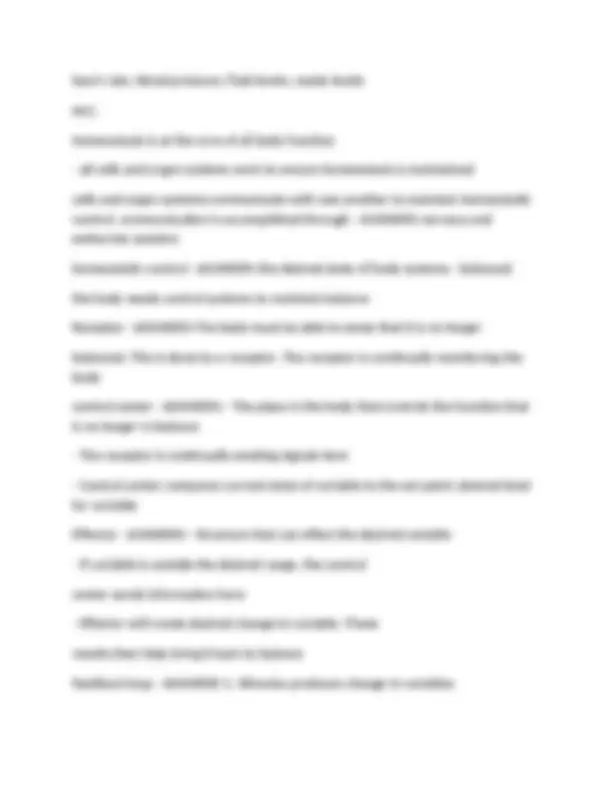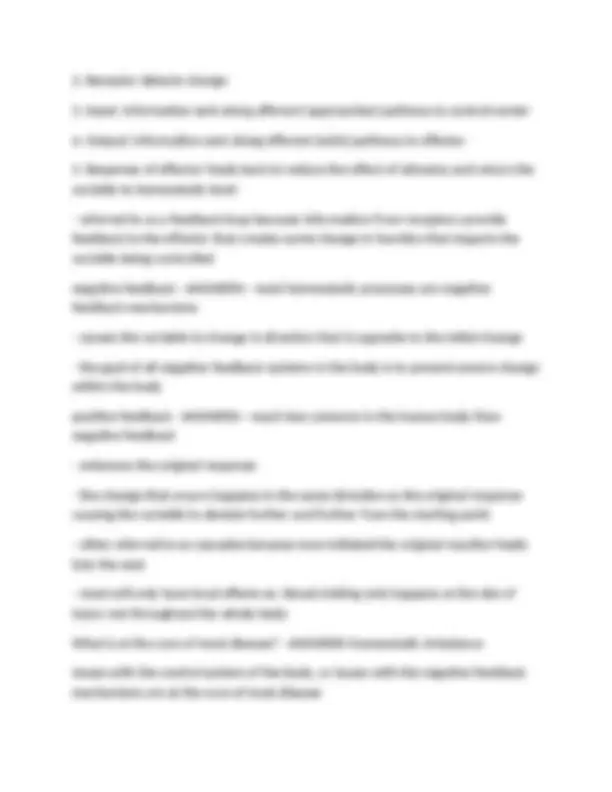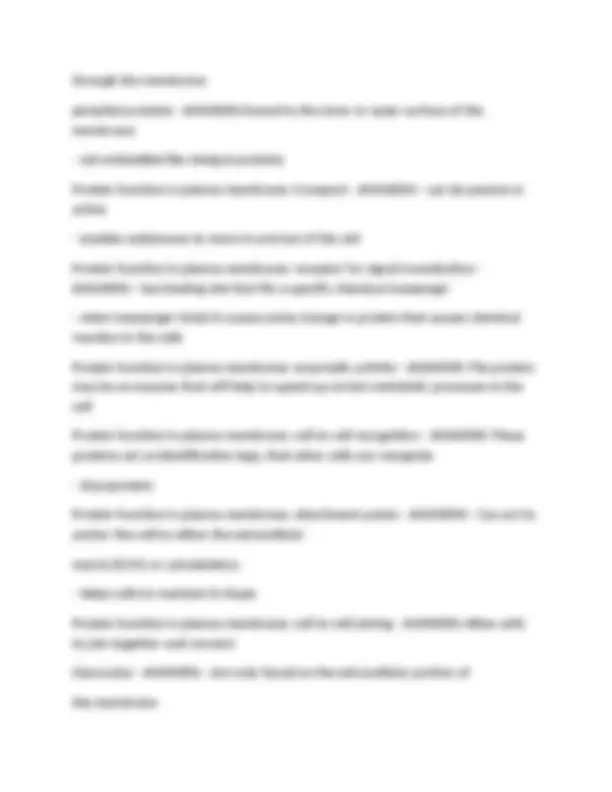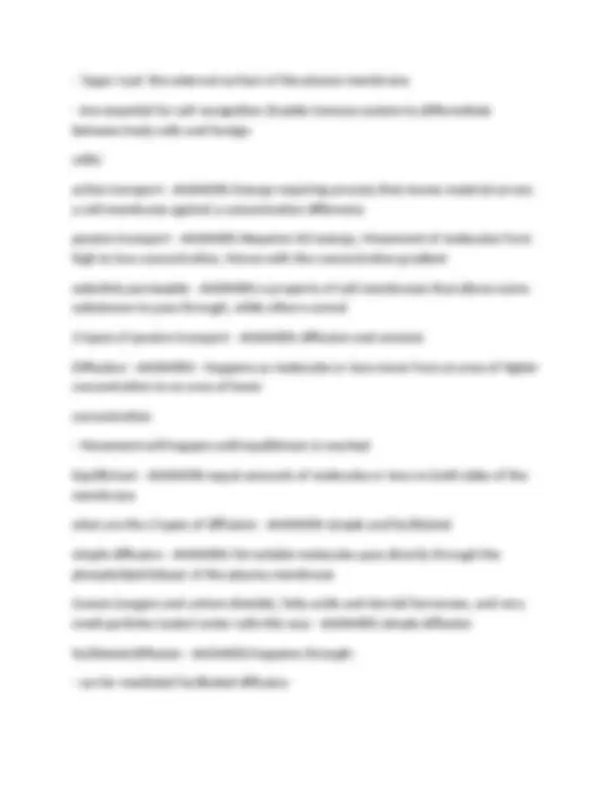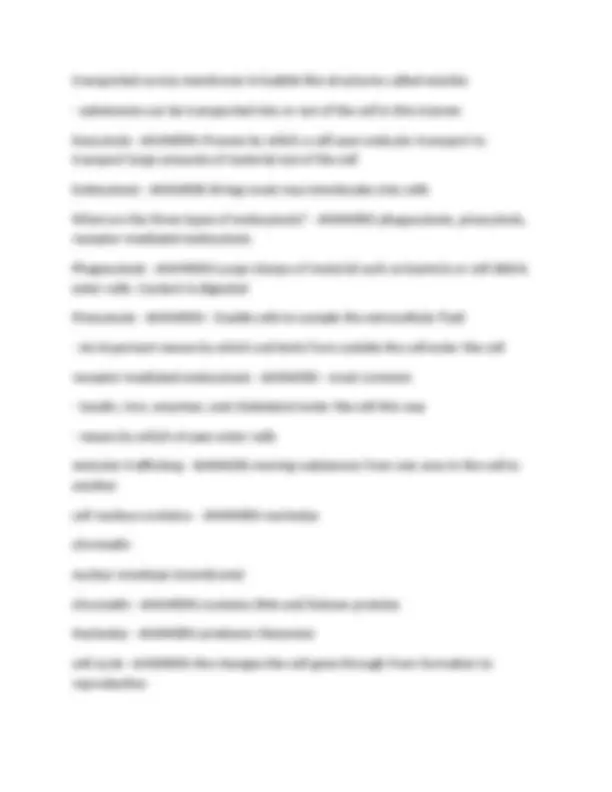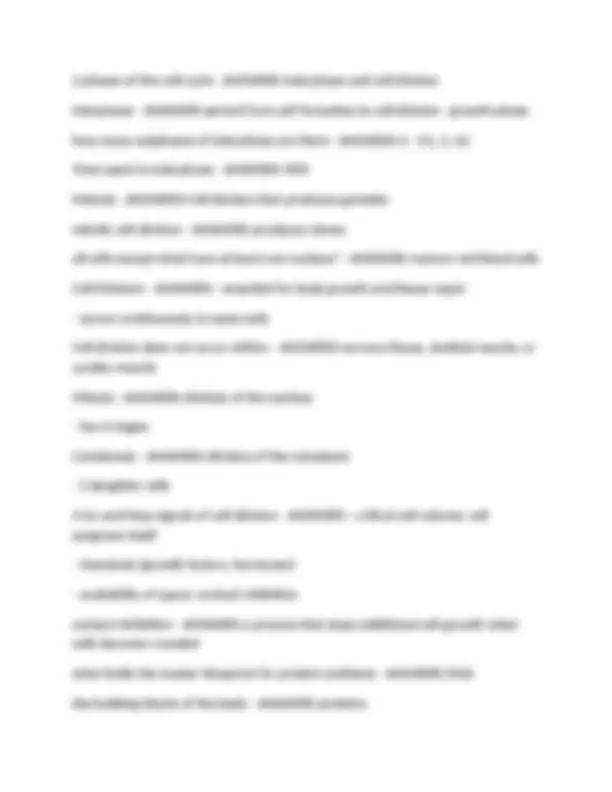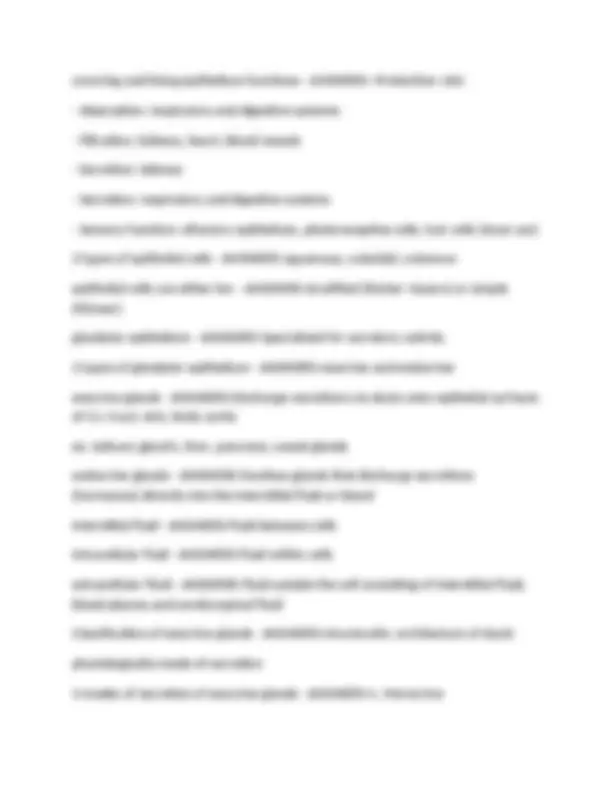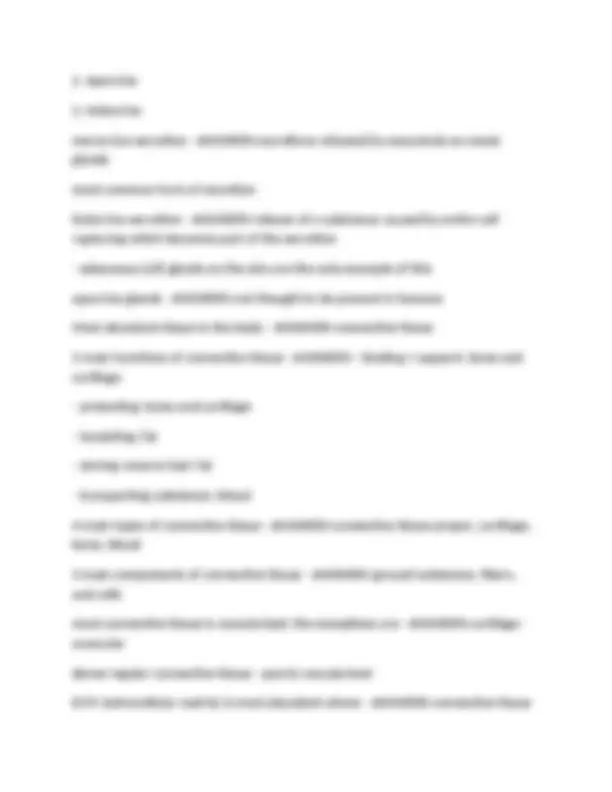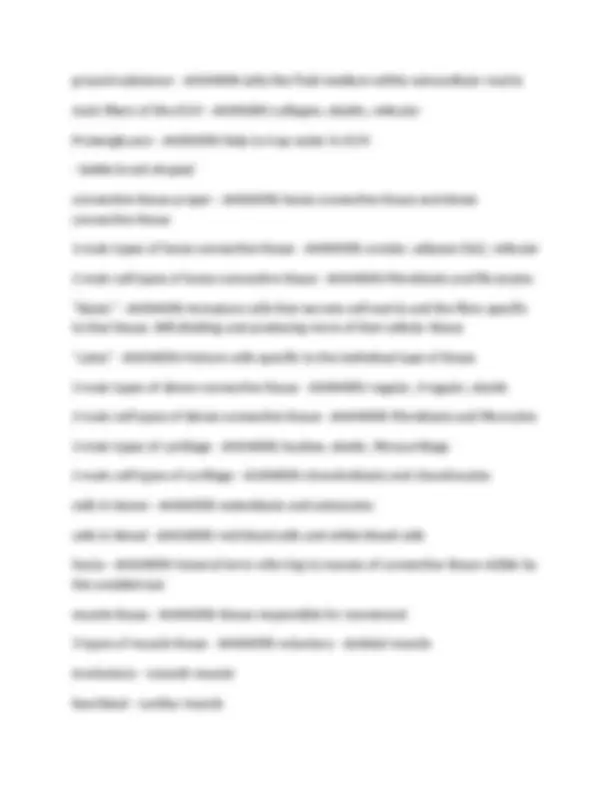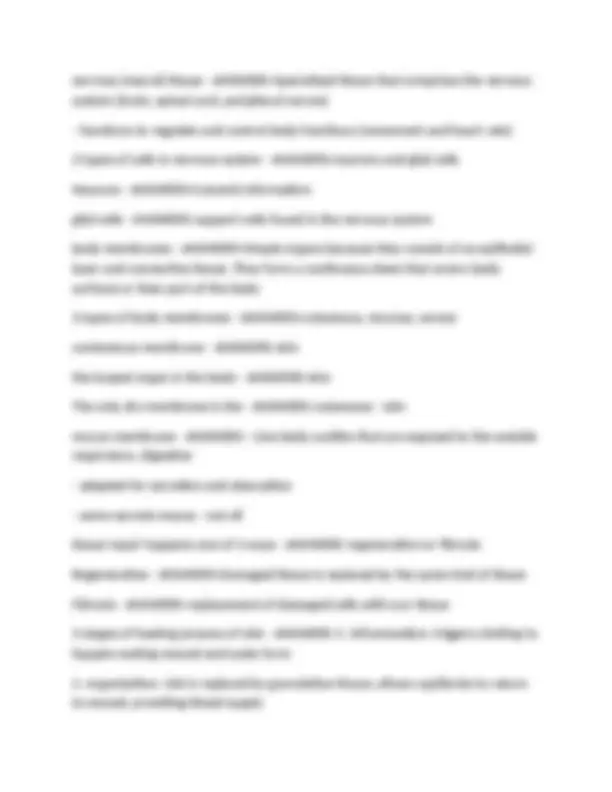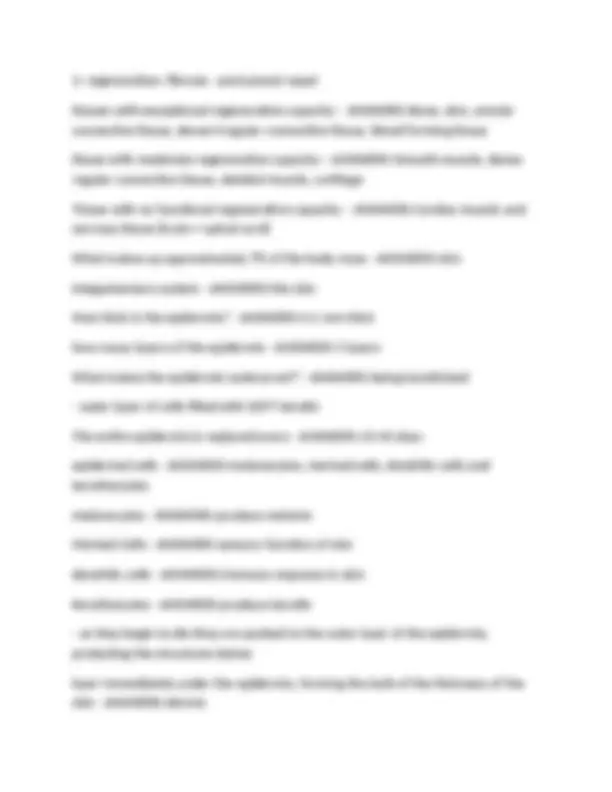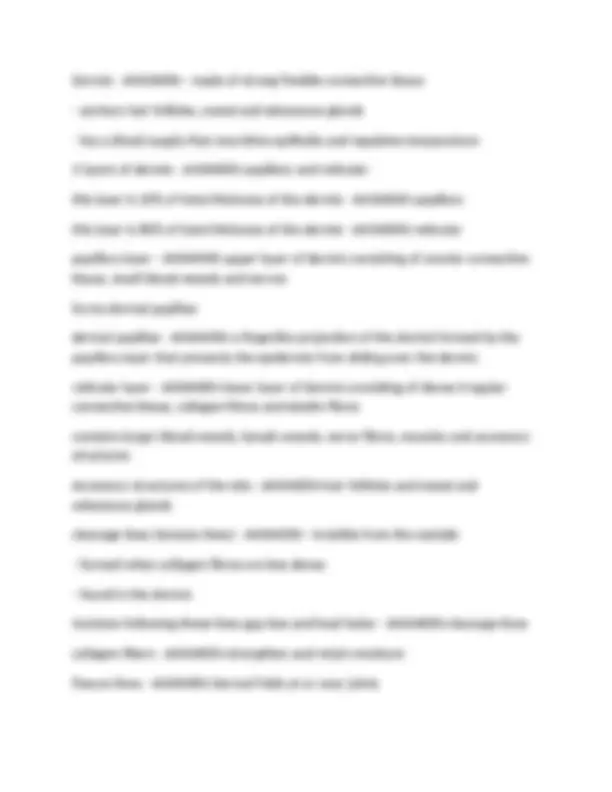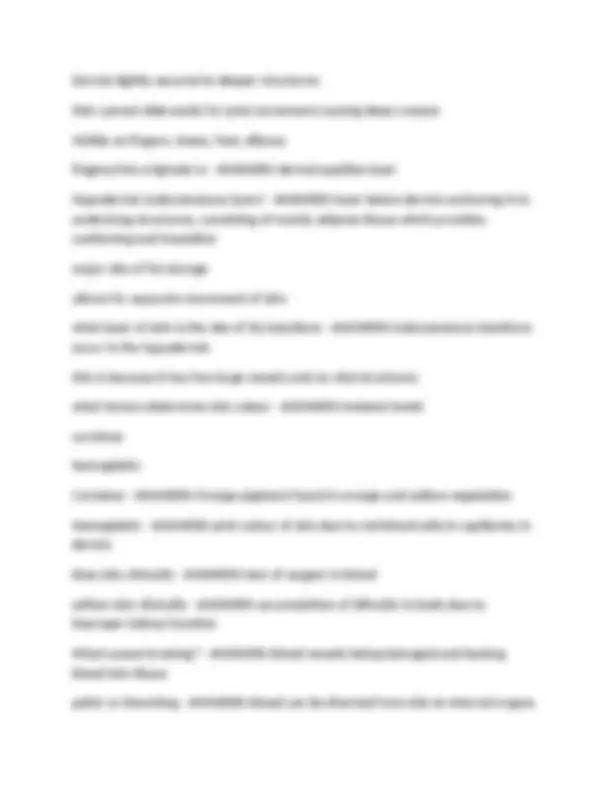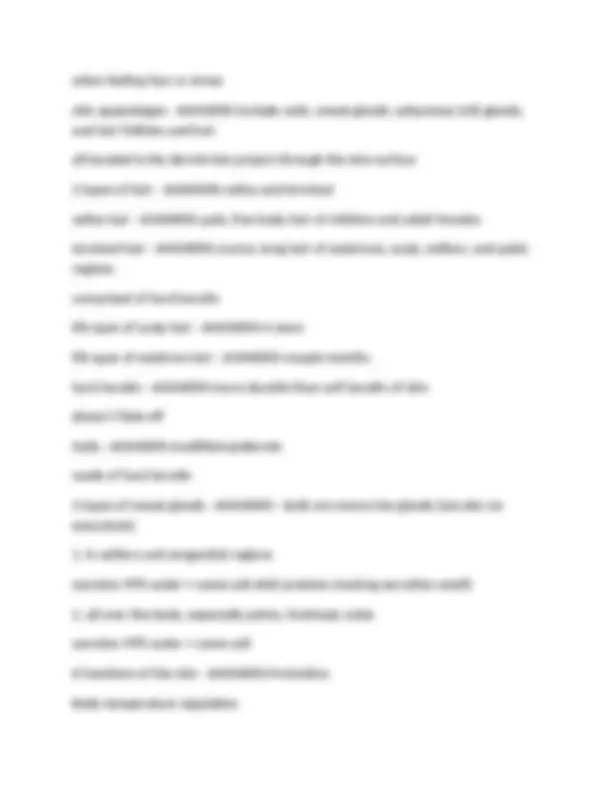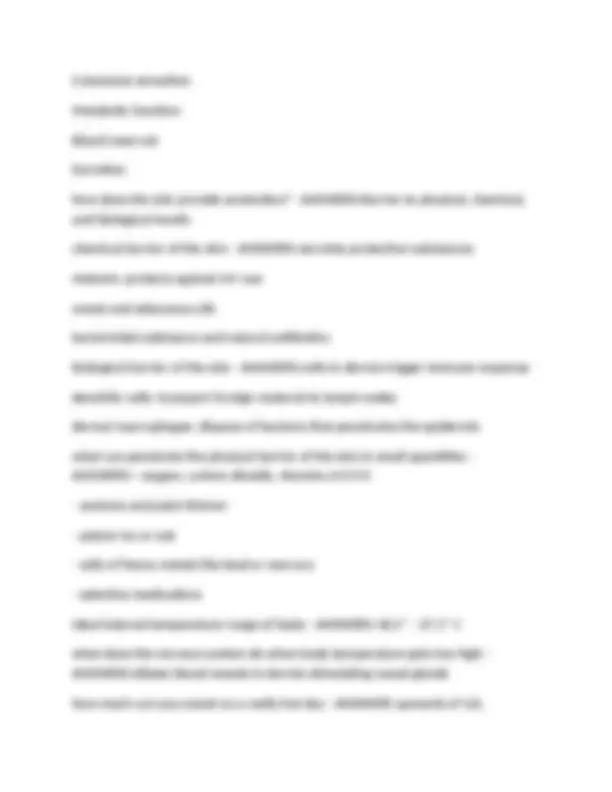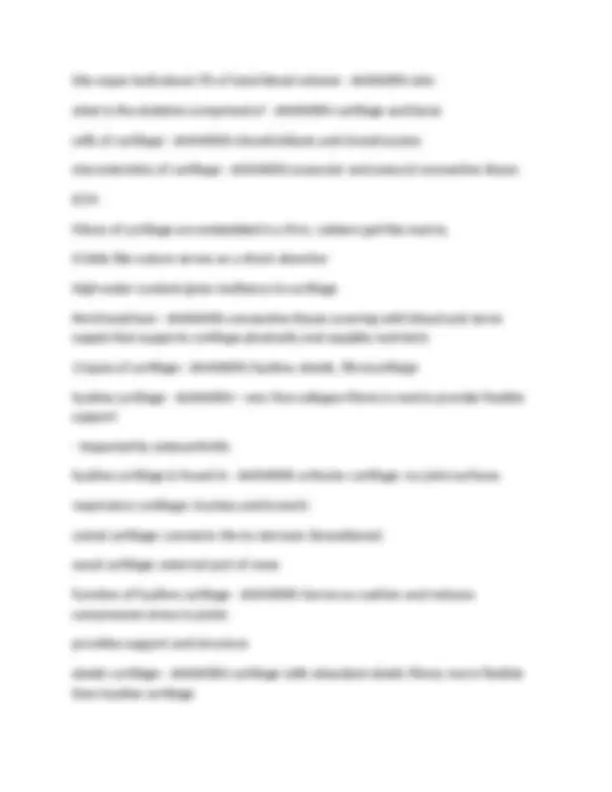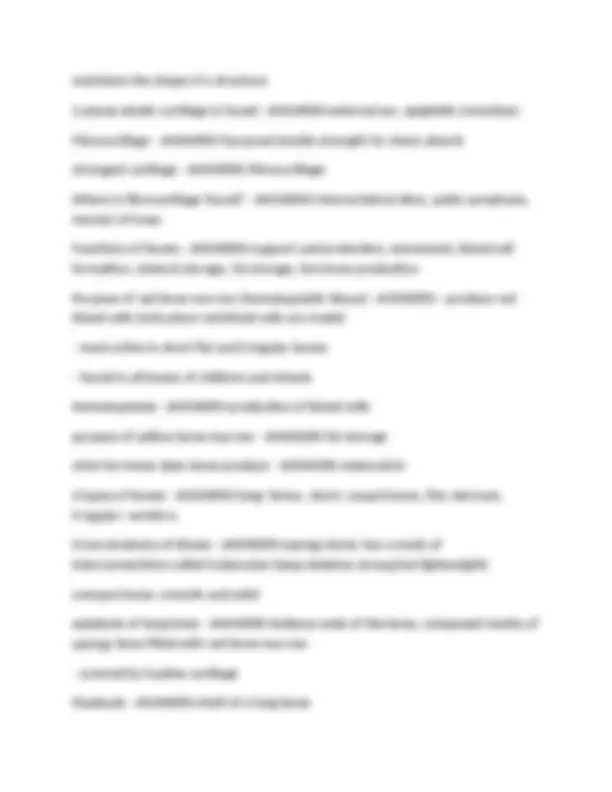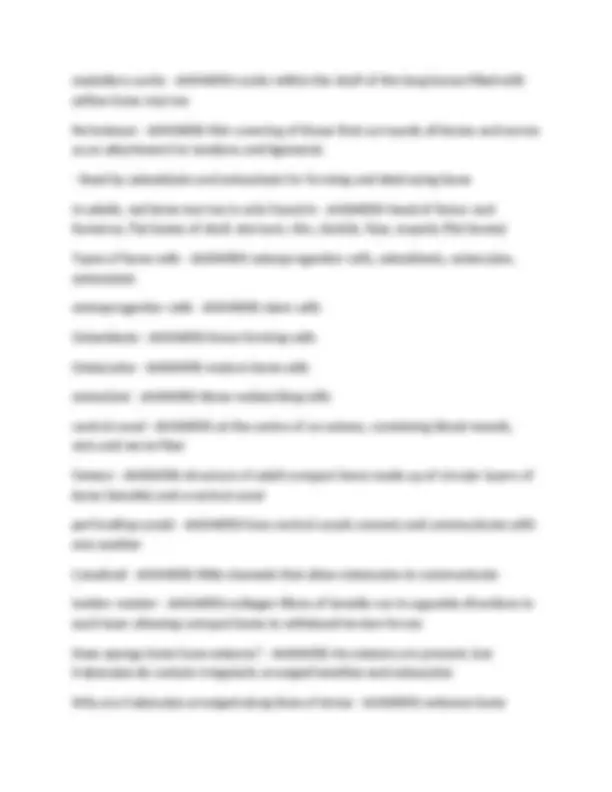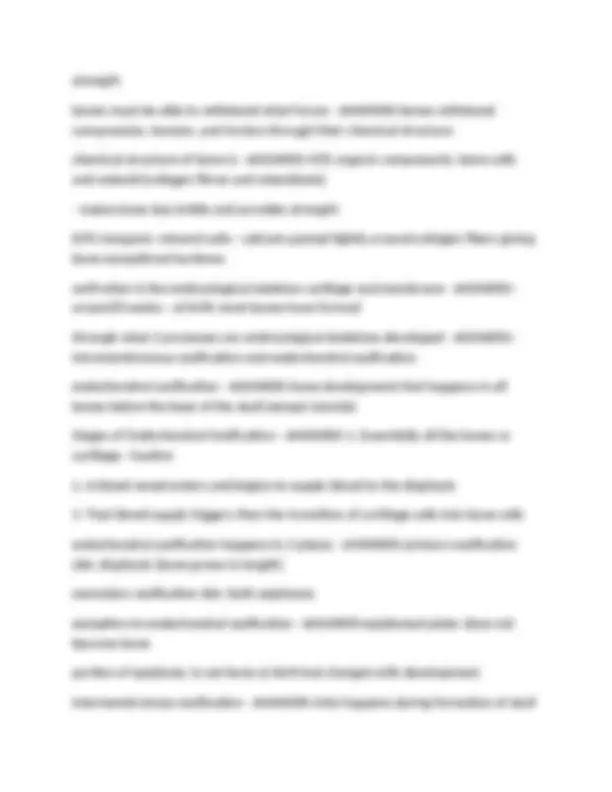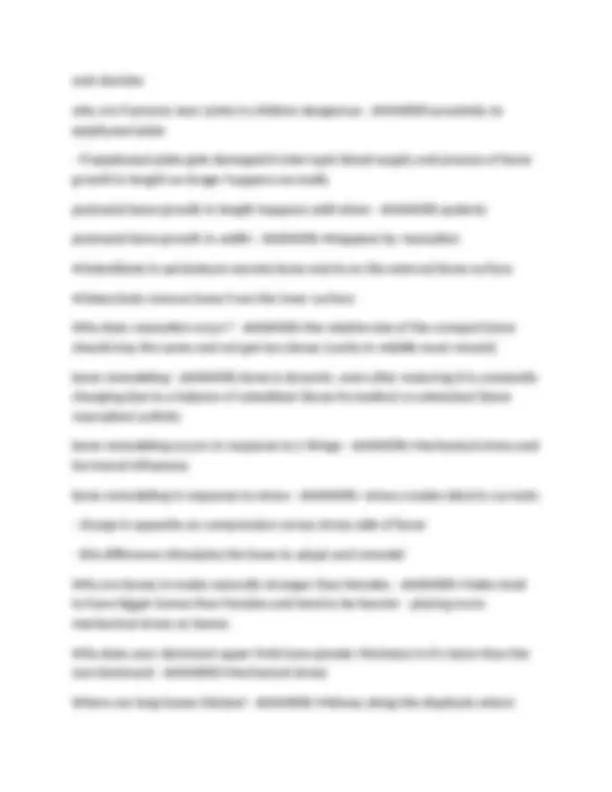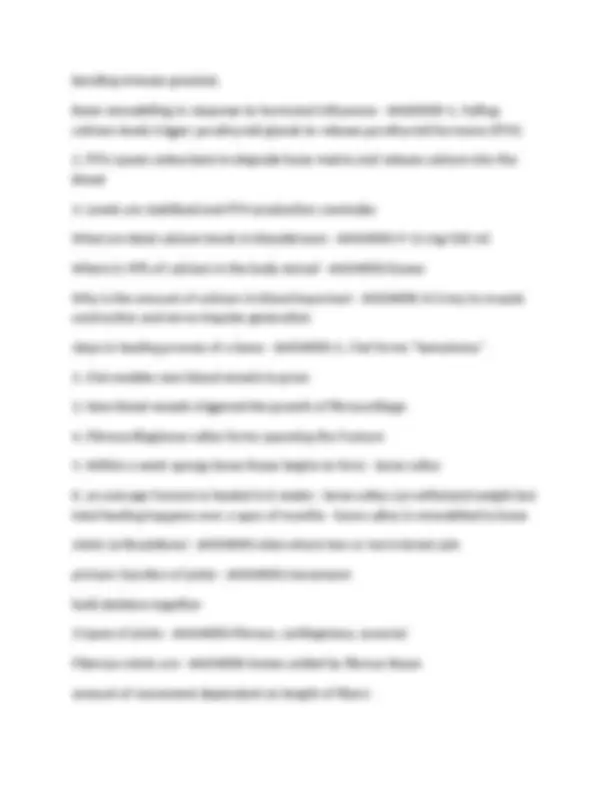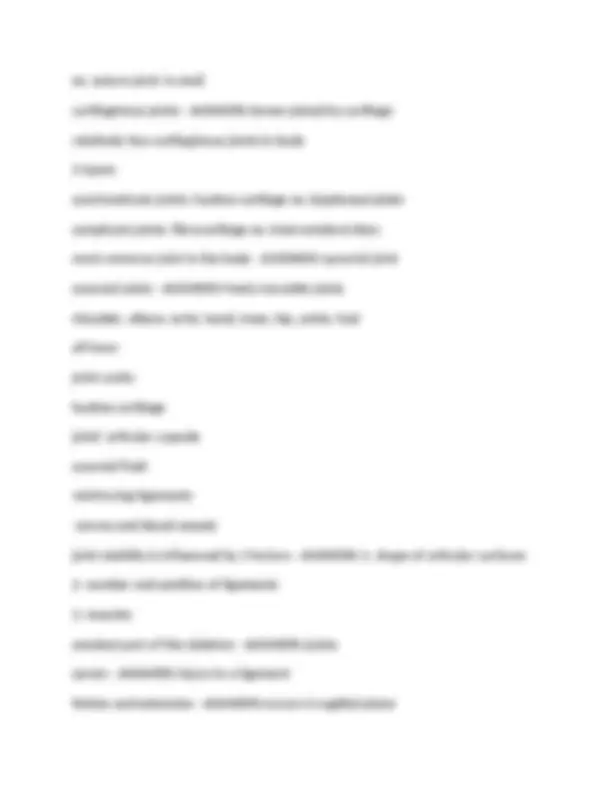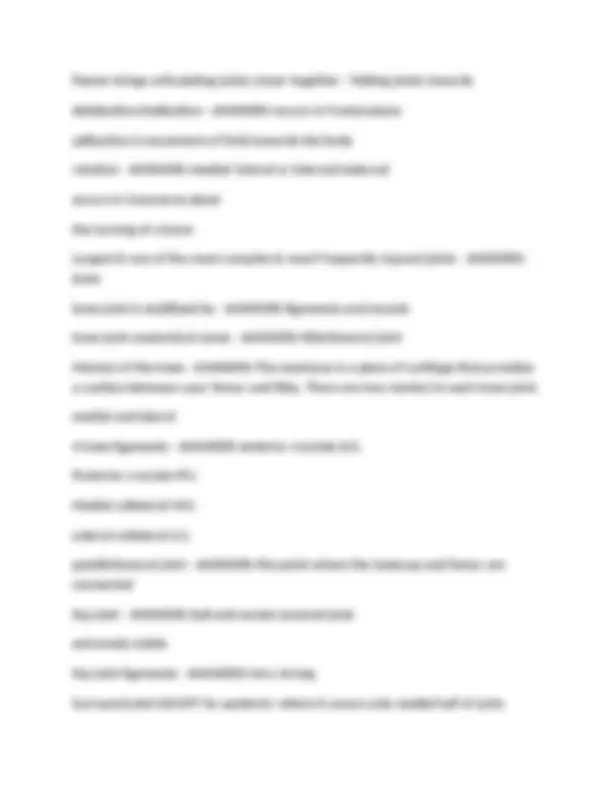Download NURS 1002 - Anatomy & Physiology Questions With Complete Solutions 2025 Graded A+ Pass. and more Exams Anatomy in PDF only on Docsity!
NURS 1002 - Anatomy & Physiology Questions With Complete
Solutions 2025 Graded A+ Pass.
How many bones are in the human body? - ANSWERS- How many muscles are in the human body? - ANSWERS- How many neurons are in the human body? - ANSWERS-86 billion How many kilometers of blood vessels are in the human body? - ANSWERS- 000 km Anatomy - ANSWERS-The study of the structure of body parts and how they are related to one another Palpation - ANSWERS-Feeling organs below the skin Auscultation - ANSWERS-Listening to organ sounds with a stethoscope Technology that provides detailed images of our anatomy - ANSWERS-X-ray, MRI, CT scans, and ultrasound Physiology - ANSWERS-The study of the function of the body
- Examines how the body parts work and perform their life-sustaining function
- It examines the dynamic workings of the body
- often at the cellular or molecular level
- depends on physics. It explains blood pressure, how muscle move joints, and how electrical currents flow in the body
- has many subdivisions, most based on specific organ systems i.e. neurophysiology At which level is al human life based? - ANSWERS-Cellular and Molecular Chemical level - ANSWERS-atoms combine to form molecules
cellular level - ANSWERS-cells are made up of molecules tissue level - ANSWERS-Tissues consist of similar types of cells 4 main types of tissue - ANSWERS-epithelial, connective, muscle, nervous organ level - ANSWERS-Organs are made up of different types of tissues organ systems level - ANSWERS-consists of different organs that work together closely How many organ systems are there? - ANSWERS- 8 requirements for life - ANSWERS-1. Maintaining boundaries
- Movement
- Responsiveness/ excitability
- Digestion
- Metabolism
- Excretion
- Reproduction
- Growth 5 survival needs - ANSWERS-nutrients oxygen water normal body temperature appropriate atmospheric pressure Homeostasis - ANSWERS-The dynamic state of equilibrium of the body, that describes the bodies ability to keep its internal condition relatively stable (i.e. temperature,
- Receptor detects change
- Input: information sent along afferent (approaches) pathway to control center
- Output: information sent along efferent (exits) pathway to effector
- Response of effector feeds back to reduce the effect of stimulus and return the variable to homeostatic level
- referred to as a feedback loop because information from receptors provide feedback to the effector that creates some change in function that impacts the variable being controlled negative feedback - ANSWERS-- most homeostatic processes are negative feedback mechanisms
- causes the variable to change in direction that is opposite to the initial change
- the goal of all negative feedback systems in the body is to prevent severe change within the body positive feedback - ANSWERS-- much less common in the human body than negative feedback
- enhances the original response
- the change that occurs happens in the same direction as the original response causing the variable to deviate further and further from the starting point
- often referred to as cascades because once initiated the original reaction feeds into the next
- most will only have local effects ex. blood clotting only happens at the site of injury not throughout the whole body What is at the core of most disease? - ANSWERS-homeostatic imbalance Issues with the control system of the body, or issues with the negative feedback mechanisms are at the core of most disease
anatomical position - ANSWERS-- To stand erect with arms at the sides and palms of the hands turned forward
- The reference position for the body axial portion - ANSWERS-head, neck, trunk appendicular portion - ANSWERS-appendages - upper (arms) and lower (legs) limbs Crural - ANSWERS-leg Popliteal - ANSWERS-back of knee Patellar - ANSWERS-kneecap clacaneal - ANSWERS-heel plantar - ANSWERS-sole of foot Dorsal - ANSWERS-back Scapular - ANSWERS-shoulder blade Vertebral - ANSWERS-spine Lumbar - ANSWERS-lower back Sacral - ANSWERS-bottom of spine (below lumbar above tailbone) Gluteal - ANSWERS-buttock Perineal - ANSWERS-region between the anus and external genitalia Cervical - ANSWERS-neck Acromial - ANSWERS-shoulder Antecubital - ANSWERS-front of elbow Sternal - ANSWERS-sternum
the walls of the ventral cavity and outer surface of visceral organs partial serosa - ANSWERS-the part of the membrane lining the ventral cavity walls visceral serosa - ANSWERS-covers organs serous cavity - ANSWERS-space between parietal and visceral serosa layers serous fluid - ANSWERS-lubricates the organs and allows them glide without friction Abdominopelvic Quadrants - ANSWERS-right upper, left upper, right lower, left lower What are the smallest units of life - ANSWERS-cells how do cells arise? - ANSWERS-from other cells plasama membrane - ANSWERS-- Separates inside the cell (intracellular) from the outside of the cell (extracellular)
- It is not passive structure, it allows / enables substances to pass through
- Has a thin phospholipid bilayer cells in the body must always be in some type of _____? - ANSWERS-fluid Why does the plasma membrane contain cholesterol? - ANSWERS-For stability and flexibility the head of phospholipids is _______? - ANSWERS-Hydrophilic: attracts water The tail of phospholipids is ______? - ANSWERS-Hydrophobic: repels water What in the plasma membrane enable it to communicate with its environment? - ANSWERS-Proteins proteins in plasma membrane - ANSWERS-integral and peripheral intergral proteins - ANSWERS-Proteins that are embedded and go all the way
through the membrane periphial proteins - ANSWERS-bound to the inner or outer surface of the membrane
- not embedded like integral proteins Protein function in plasma membrane: transport - ANSWERS-- can be passive or active
- enables substances to move in and out of the cell Protein function in plasma membrane: receptor for signal transduction - ANSWERS-- has binding site that fits a specific chemical messenger
- when messenger binds it causes some change in protein that causes chemical reaction in the cells Protein function in plasma membrane: enzymatic activity - ANSWERS-The protein may be an enzyme that will help to speed up certain metabolic processes in the cell Protein function in plasma membrane: cell to cell recognition - ANSWERS-These proteins act as identification tags, that other cells can recognize
- Glycoprotein Protein function in plasma membrane: attachment points - ANSWERS-- Can act to anchor the cell to either the extracellular matrix (ECM) or cytoskeleton.
- Helps cells to maintain it shape Protein function in plasma membrane: cell to cell joining - ANSWERS-Allow cells to join together and connect Glycocalyx - ANSWERS-- Are only found on the extracellular portion of the membrane
- channel-mediated facilitated diffusion Carrier-mediated facilitated diffusion - ANSWERS-Via protein carrier specific for one chemical; binding of substrate causes transport proteins to change shape Channel-mediated facilitated diffusion - ANSWERS-Through a channel protein; mostly ions selected on the basis of size and charge What 3 factors is diffusion influenced by? - ANSWERS-1. The concentration gradient: the bigger the difference the faster diffusion will occur
- Molecular size: the smaller the size, the faster the rate of diffusion
- Temperature: the warmer the temperature the faster the rate of diffusion What is facilitated diffusion influenced by? - ANSWERS-specificity and saturability Specificity - ANSWERS-Carrier and channels are specific to certain solutes Saturability - ANSWERS-- There are a limited number of carries and channels in membranes
- As a result the rate of diffusion depends on the availability of carrier or channel
- when all carriers are occupied and no more diffusion can happen, saturation has occurred Solution - ANSWERS-solvent + solute Solvent - ANSWERS-the substance in which the solute dissolves Solute - ANSWERS-A substance that is dissolved in a solvent Osmosis - ANSWERS-- Involves movement of a solvent (usually water) across the plasma membrane
- Can pass through the lipid bilayer or channel proteins
- It occurs when there is a difference in water concentration on the two sides of the membrane.
- Extremely important clinically, when looking at conditions that involve the accumulation of fluid (edema) Osmolarity - ANSWERS-- total concentration of solute in a solution
- lower/higher solute concentration = lower/higher osmolarity
- water moves by osmosis from an area of lower to higher solute concentration Cell will either shrink or expand, in response to change in volume. This will continue until: - ANSWERS-Osmolarity is the same on both sides or The membrane stretches to its breaking point Tonicity - ANSWERS-A solutions ability to change the shape of cells by changing the cells internal water volume hypotonic solution - ANSWERS-- Contains a lower concentration of non- penetrating solute than are present inside cells
- Cells take on water by osmosis until they become bloated and burst (lyse) hypertonic solution - ANSWERS-- contains a higher concentration of non- penetrating solute than are present inside the cells
- cells lose water by osmosis and shrink isotonic solution - ANSWERS-- Same solute/water concentration as inside cells; water moves in and out
- cells return to their normal size and shape 2 main types of active membrane transport - ANSWERS-active and vesicular 2 types of active transport - ANSWERS-primary and secondary primary active transport - ANSWERS-- Energy comes directly from ATP
- the transport occurs through proteins called pumps
transported across membrane in bubble like structures called vesicles
- substances can be transported into or out of the cell in this manner Exocytosis - ANSWERS-Process by which a cell uses vesicular transport to transport large amounts of material out of the cell Endocytosis - ANSWERS-Brings most macromolecules into cells What are the three types of endocytosis? - ANSWERS-phagocytosis, pinocytosis, receptor-mediated endocytosis Phagocytosis - ANSWERS-Large clumps of material such as bacteria or cell debris enter cells. Content is digested Pinocytosis - ANSWERS-- Enable cells to sample the extracellular fluid
- An important means by which nutrients from outside the cell enter the cell receptor-mediated endocytosis - ANSWERS-- most common
- insulin, iron, enzymes, and cholesterol enter the cell this way
- means by which viruses enter cells vesicular trafficking - ANSWERS-moving substances from one area in the cell to another cell nucleus contains: - ANSWERS-nucleolus chromatin nuclear envelope (membrane) chromatin - ANSWERS-contains DNA and histone proteins Nucleolus - ANSWERS-produces ribosomes cell cycle - ANSWERS-the changes the cell goes through from formation to reproduction
2 phases of the cell cycle - ANSWERS-interphase and cell division Interphase - ANSWERS-period from cell formation to cell division - growth phase how many subphases of interphase are there - ANSWERS-3 - G1, S, G Time spent in interphase - ANSWERS-90% Meiosis - ANSWERS-Cell division that produces gametes mitotic cell division - ANSWERS-produces clones all cells except what have at least one nucleus? - ANSWERS-mature red blood cells Cell Divisioin - ANSWERS-- essential for body growth and tissue repair
- occurs continuously in some cells Cell division does not occur within: - ANSWERS-nervous tissue, skeletal muscle, or cardiac muscle Mitosis - ANSWERS-division of the nucleus
- has 4 stages Cytokinesis - ANSWERS-division of the cytoplasm
- 2 daughter cells 3 Go and Stop signals of cell division - ANSWERS-- critical cell volume: cell outgrows itself
- chemicals (growth factors, hormones)
- availability of space: contact inhibition contact inhibition - ANSWERS-a process that stops additional cell growth when cells become crowded what holds the master blueprint for protein synthesis - ANSWERS-DNA the building blocks of the body - ANSWERS-proteins
The bases in mRNA are the same as DNA except for - ANSWERS-Uracil replaces Thymine Translation - ANSWERS-mRNA that has transcribed DNA is now translated into proteins Where does translation occur? - ANSWERS-cytoplasm steps of translation - ANSWERS-1. mRNA leaves the nucleus and goes to the cytoplasm
- tRNA transfer amino acids from cytoplasm to the ribosomes
- mRNA nucleotide bases are then translated into amino acid sequences - polypeptide chains in the ribosomes What are ribosomes made of? - ANSWERS-rRNA rRNA - ANSWERS-Ribosomal RNA; form ribosomes
- helps translate message from mRNA tRNA - ANSWERS-Transfer RNA; transfer amino acids from cytoplasm to the ribosomes and decode mRNA's message
- act as a means of transferring amino acids into ribosomes Apoptosis - ANSWERS-programmed cell death ex. utural cells during menstruation Hyperplasia - ANSWERS-accelerated cell growth atrophy - ANSWERS-decrease in size Tissues - ANSWERS-Groups of cells with a similar structure and common function 4 types of tissue - ANSWERS-epithelial, connective, muscle, nervous Histology - ANSWERS-study of tissues
Tissue consists of - ANSWERS-intercellular junctions and extracellular matrix (ECM) extracellular matrix (ECM) - ANSWERS-- made up of fibers and ground substances
- acts as glue that holds cells together
- enables weight bearing, withstands tension and endures abuse epithelial tissue - ANSWERS-Covers surfaces, including skin, lines structures and forms secretory glands
- found at the boundary between different environments (internal/external bodily environments)
- Avascular (no blood supply) and inverted (supplied by nerve fibers)
- regenerates easily via cell division functions of epithelial tissue - ANSWERS-- physical protection (covers surfaces): is modified in response to stimuli ex. calluses
- absorption and secretion: specializes in moving things in and out of the body
- produces specialized secretions: the cells that form glands
- sensory functions: neuroepithelium is found in special sense organs ex. smell, sight, taste, hearing 2 surfaces of epithelial tissue - ANSWERS-apical and basal apical surface of epithelial tissue - ANSWERS-Exposed surface (not attached to anything) exposed to the outside of the body (in the case of skin) or the inner cavity of internal organs basal surface of epithelial tissue - ANSWERS-Attached to underlying connective tissue 2 main types of epithelial tissue - ANSWERS-covering and lining epithelia, glandular epithelia
- Apocrine
- Holocrine merocrine secretion - ANSWERS-secretions released by exocytosis ex sweat glands most common form of secretion holocrine secretion - ANSWERS-release of a substance caused by entire cell rupturing which becomes part of the secretion
- sebaceous (oil) glands on the skin are the only example of this apocrine glands - ANSWERS-not thought to be present in humans Most abundant tissue in the body - ANSWERS-connective tissue 5 main functions of connective tissue - ANSWERS-- binding + support: bone and cartilage
- protecting: bone and cartilage
- insulating: fat
- storing reserve fuel: fat
- transporting substance: blood 4 main types of connective tissue - ANSWERS-connective tissue proper, cartilage, bone, blood 3 main components of connective tissue - ANSWERS-ground substance, fibers, and cells most connective tissue is vascularized; the exceptions are - ANSWERS-cartilage - avascular dense regular connective tissue - poorly vascularized ECM (extracellular matrix) is most abundant where - ANSWERS-connective tissue
ground substance - ANSWERS-jelly like fluid medium within extracellular matrix main fibers of the ECM - ANSWERS-collagen, elastin, reticular Proteoglycans - ANSWERS-help to trap water in ECM
- bottle brush shaped connective tissue proper - ANSWERS-loose connective tissue and dense connective tissue 3 main types of loose connective tissue - ANSWERS-areolar, adipose (fat), reticular 2 main cell types of loose connective tissue - ANSWERS-fibroblasts and fibrocytes "blasts" - ANSWERS-Immature cells that secrete cell matrix and the fibre specific to that tissue. Still dividing and producing more of that cellular tissue "cytes" - ANSWERS-Mature cells specific to the individual type of tissue 3 main types of dense connective tissue - ANSWERS-regular, irregular, elastic 2 main cell types of dense connective tissue - ANSWERS-fibroblasts and fibrocytes 3 main types of cartilage - ANSWERS-hyaline, elastic, fibrocartilage 2 main cell types of cartilage - ANSWERS-chondroblasts and chondrocytes cells in bones - ANSWERS-osteoblasts and osteocytes cells in blood - ANSWERS-red blood cells and white blood cells fascia - ANSWERS-General term referring to masses of connective tissue visible by the unaided eye muscle tissue - ANSWERS-tissue responsible for movement 3 types of muscle tissue - ANSWERS-voluntary - skeletal muscle involuntary - smooth muscle heartbeat - cardiac muscle

